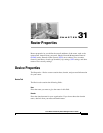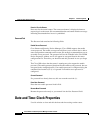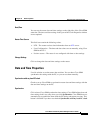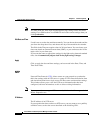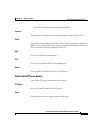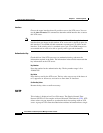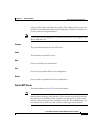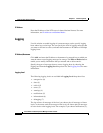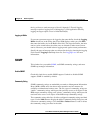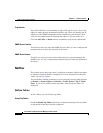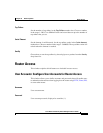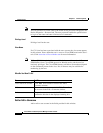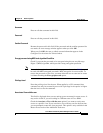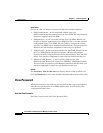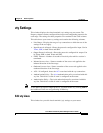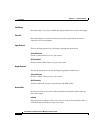
31-9
Cisco Router and Security Device Manager 2.5 User’s Guide
OL-4015-12
Chapter 31 Router Properties
Date and Time: Clock Properties
the log collects or sends messages of levels 0 through 5. Firewall logging
messages require a logging level of debugging(7), and Application Security
logging messages require a level of informational(6).
Logging to Buffer
If you want system messages to be logged to the router buffer, check the Logging
Buffer check box in the dialog that Cisco SDM displays when you click Edit,
then enter the buffer size in the Buffer Size field. The larger the buffer, the more
entries can be stored before the oldest ones are deleted to make room for new
entries. However, you should balance logging needs against router performance.
Specify the types of messages that are collected in the log by choosing the logging
level from the Logging Level drop-down list. See Logging Level for more
information.
SNMP
This window lets you enable SNMP, set SNMP community strings, and enter
SNMP trap manager information.
Enable SNMP
Check this check box to enable SNMP support. Uncheck to disable SNMP
support. SNMP is enabled by default.
Community String
SNMP community strings are embedded passwords to Management Information
Bases (MIBs). MIBs store data about router operation and are meant to be
available to authenticated remote users. The two types of community strings are
“public” community strings, which provide read-only access to all objects in the
MIB except community strings, and “private” community strings, which provide
read-and-write access to all objects in the MIB except community strings.
The community string table lists all of the configured community strings and their
types. Use the Add button to display the Add a Community String dialog box and
create new community strings. Click the Edit or Delete buttons to edit or delete
the community string you chose in the table.



